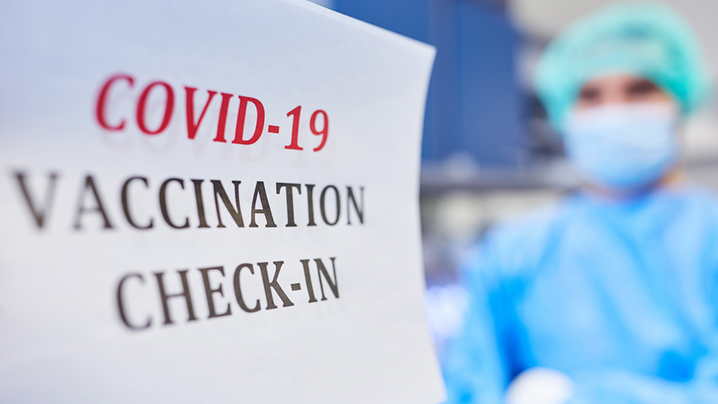
Despite the surge in vaccine development and distribution, the demand for COVID-19 vaccines still outweighs the supply. As Americans eagerly await the days they can once again visit family, gather with friends, and go about their daily routines without the concern of potentially spreading or contracting a virus that has claimed the lives of more than 500,000 Americans, the necessity for regular communication with the public has never been greater.
However, each state, county, and municipality face unique challenges. Some jurisdictions are facing a significant degree of “vaccine deserts,” a newly coined term calling attention to the disparity in vaccine availability across the country. Even with a strong demand for vaccines, some jurisdictions have significant vaccine hesitancy issues that may hamper immunization efforts, particularly in communities hardest hit by the pandemic. And so, the question remains, “How do we build public confidence and trust when the roles of local government and public sentiment varies across jurisdictional lines?”
Local governments can rely on many of the strategies and tools that have been essential since the earliest days of the pandemic, but it is critical to consider their unique applications specific to vaccine concerns.
1. Learn as much as you can about the vaccine administration process
Even if you are not be directly responsible for administration, residents expect their local government to be knowledgeable about the process. This might require establishing a communications link with the administering health department, hospital, health system, and even local pharmacies that might be administering the vaccine. Your knowledge might just be the connection that your community needs to navigate the challenges of getting a vaccine.
2. Create a centralized, vaccine-specific web presence
A centralized COVID-19 vaccination information online presence—even if your organization is not directly involved in the administration of vaccines—which is distinct from general information about the pandemic, can be set up as a microsite or simply as a webpage on the government website. This online presence serves as a primary source of information for residents about the science behind the vaccine, to register to get a vaccine, and to access the latest information from state and federal agencies about vaccine distribution and administration.
-
Clarify your role in vaccine distribution. If the state is administering the vaccinations, let them know that. If your only role is to keep them informed and connected to the information that they need, tell them. There is an opportunity to build public trust by serving as a resource for critical information that the public relies on, so be that source of information.
-
Explain the vaccine process. Most states follow CDC COVID-19 Vaccine Rollout Recommendations. Helping residents understand these phases is essential to addressing concerns about who is eligible for vaccines in your community. An online application like the one developed by the state of Virginia can be particularly helpful.
-
Provide links to any registration/preregistration websites. One of the greatest challenges individuals face is knowing how to register or where to show up to receive a vaccine. Registration websites can be confusing for some users. Simply knowing where to begin can be difficult. So, create prominent links to guide people to make certain they are able to sign-up to get vaccines once they are eligible. If there are local pharmacies or mass vaccination sites, be sure to provide that information along with a list of any documents and information required of residents to get vaccinated.
3. Engage on social media
Use your influence and credibility to reach a broader audience by sharing links and information on government social media accounts and personal social media accounts. Share or retweet content from state agencies and local government departments. Encourage government employees to do the same. The goal is simply to provide access to information, not to tell the public what behaviors they should engage in. As a member of the government, your followers trust that the information you provide is credible. They are more likely to share and like the content, which increases the reach of the information to individuals outside of the local government network. So, be active and intentional in distributing information.
4. Collaborate with others
Statewide information applies to all residents regardless of local jurisdictional boundaries. Often, vaccination sites are shared by multiple jurisdictions, and neighboring jurisdictions frequently share similar obstacles and public sentiments. By establishing a joint information center with multiple jurisdictions, each government body has the ability to combine resources and assure a more consistent message across jurisdictions. Additionally, community nonprofits, faith-based organizations, and senior centers are great resources to help get the word out. Be sure to provide information as they are another trusted source for information from the community.
5. Establish a call line
Although this may be a logistical challenge for many local governments, there are a number of residents who struggle to navigate online applications and websites. Setting up a COVID-19 information call center can be a significant lifeline for these residents to help get them registered or simply point them to the appropriate channels. While online information will reach the majority of residents, never underestimate the need and good will that is achieved through a call center.
Ultimately, getting shots in the arms of our residents is essential to rebuilding our communities without constant threat of COVID-19. Some local governments have far more direct responsibility in the logistics of vaccine administration than others. However, we all have an obligation to engage with our community and provide key information to make certain they are able to make informed decisions about vaccinations and that they have equal access to resources necessary to register and receive the vaccine once it is available.
For additional resources, visit ICMA’s Coronavirus Resource page.
New, Reduced Membership Dues
A new, reduced dues rate is available for CAOs/ACAOs, along with additional discounts for those in smaller communities, has been implemented. Learn more and be sure to join or renew today!
